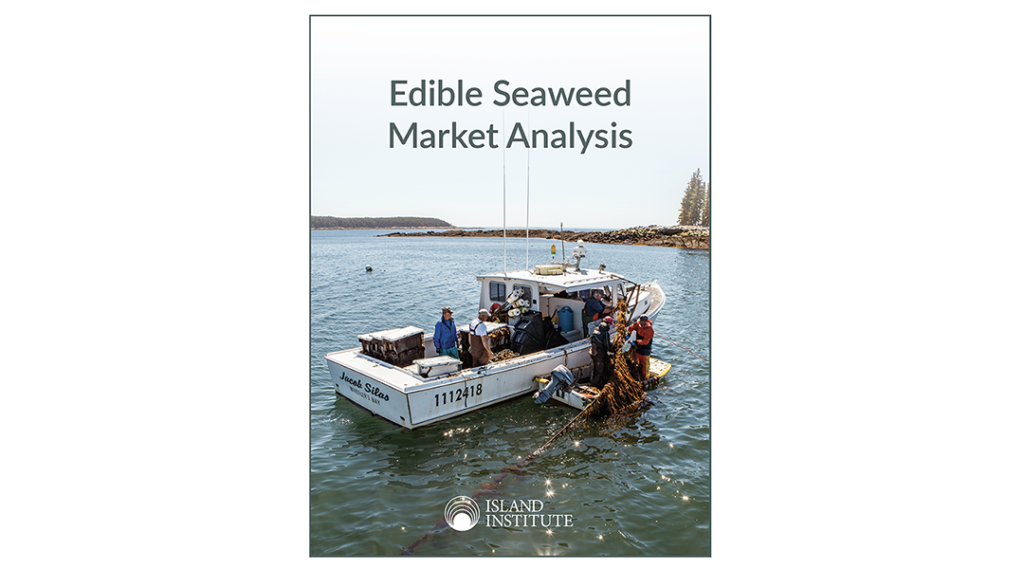Update as of September 2023:
Island Institute has discontinued distribution of the Edible Seaweed Market Analysis, as some figures in the analysis have become outdated. Please contact Sam Belknap at sbelknap@islandinstitute.org with any questions.
ROCKLAND, ME – The Island Institute has published a new study that describes the growth potential for Maine’s edible seaweed market over the next fifteen years. More than 95% of edible seaweed products found in the U.S. are currently imported, yet Maine waters provide the perfect conditions for growing quality sea vegetables locally. Maine aquaculturists are harvesting a highly nutritious, organic product and are seeing a surge in interest in edible seaweed across the country.
This 2020 study provides the most up-to-date analysis of Maine’s edible seaweed market conditions and indicates how investments in this sector could enhance Maine’s coastal economy by diversifying marine livelihoods and providing new supply-chain businesses and jobs.
The Edible Seaweed Market Analysis report is designed to be a critical resource for the Maine seaweed aquaculture industry. This report documents the size and nature of the business opportunity and identifies the requirements for sustainable growth.
Brianna Warner, CEO of Atlantic Sea Farms, is popularizing new kelp food products for retail and wants to see kelp dishes show up on more restaurant menus. She says, “The state of Maine is fast becoming the leader in domestic seaweed products. A report that can help give us a better roadmap as we build something entirely new is incredibly helpful.”
The publication provides data on the size and scope of global and domestic markets for edible seaweed and profiles factors that influence Maine’s capacity to participate competitively in the domestic market. The research indicates that Maine-farmed edible seaweed production will grow an average of 12%–15% annually over the next decade and is expected to more than double seaweed production by 2025. Growing and harvesting edible seaweed species of sugar kelp and alaria is a relatively low cost, easily implementable process that provides supplemental income for harvesters and leads to more product innovation.
Craig Olson, senior community development officer for small business and aquaculture at the Island Institute, says the objective is to help create greater economic diversity for Maine’s island and coastal communities and points to this study as a vital tool to help understand the potential of this burgeoning, clean, marine industry. “A greater understanding of the market at a local, regional, and international level enables more strategic investments in sea farming. The Island Institute assists farmers, processors, and distributors where modest investments can make large impacts for new business owners through on-the-water training and by providing access to financing through the Tom Glenn Community Impact Fund.”
The annual revenue potential for harvesters varies significantly depending on lease acreage and processing practices. For these harvesters, securing access to processing capabilities before initiating the growing process is critical to success. Peter Piconi leads the aquaculture program at the Island institute and supports new seaweed farmers starting businesses. He highlights the key findings in the report, “Continued growth in the industry is dependant upon the expansion of processing capacities, more value-added product development, distribution network expansion, and building consumer awareness. As the emerging U.S. edible seaweed market develops, participants are well-positioned to leverage Maine’s water quality and brand advantages to secure a major role in the U.S. marketplace.”
The study compiles extensive research by business analysts who conducted in-depth interviews with edible seaweed harvesters, processors, researchers, retailers, and industry experts in Maine, Alaska, New England, California, and the Pacific Northwest. This market report serves as baseline research for Maine’s growing seaweed aquaculture industry.


